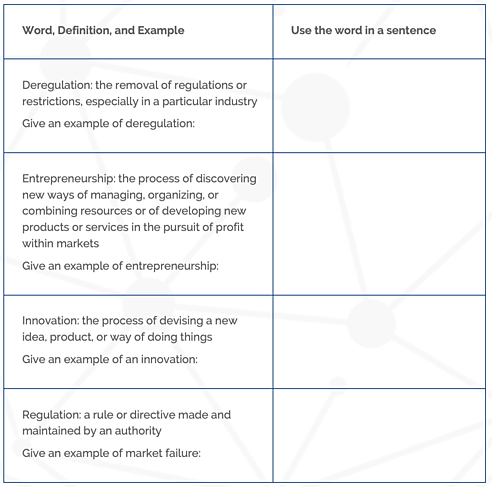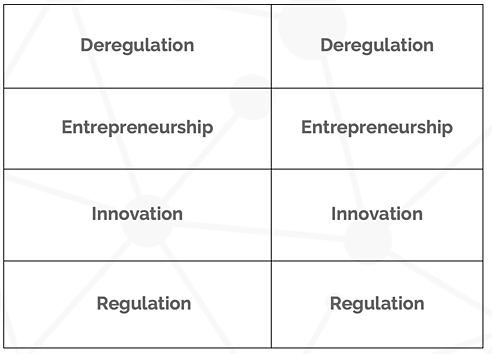Lesson Overview
Students will participate in a warm‐up in which regulatory policies would directly affect their lives. After exploring important vocabulary, students will investigate the impact of regulatory policies on the availability and cost of COVID-19 tests early in the pandemic. Students will analyze the costs and benefits of regulatory policies. Students will evaluate regulatory changes that occurred as a response to the COVID-19 pandemic. Finally, students will apply their knowledge of regulatory costs and benefits of deregulation to a policy.





